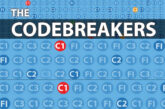
Need help with cracking those EICR codes? The technical team at NAPIT, with the help of the 18th Edition Codebreakers publication, answer your latest coding queries. Click on the photos for a closer look!
PHILLIP FOSTER: I WAS CALLED OUT RECENTLY TO A CLIENT SAYING SHE HAD SOME WORK DONE AND SINCE THEN THE LIGHT HAD BEEN REALLY DULL. SHE HAD TRIED TO CONTACT THE “ELECTRICIAN” BUT TO NO AVAIL! IMAGINE SEEING THIS WHEN I TOOK THE COVER OFF…
So often, we state that work must only be carried out by a person with the relevant skills, qualifications and experience to make them competent for a particular task. Quite clearly we can see what happens when those three fundamental requirements have not been applied.
I have to say that I thought I’d seen it all before this submission, but I’ll admit to never having seen someone install the control tray of an emergency light fitting back to front in its housing.
The most basic instruction is to follow the manufacturer’s guidance, Regulation 510.3, when putting together the equipment to comply with Regulation 134.1.2. So, I’m lost for words here, unless the client was looking for a light fitting that gave a nod to the 1980’s movie Tron.
The green LED tell-tale is evidently operational and a giveaway to identify the fitting as an emergency device. As an emergency light fitting, it needs to comply with the installation requirements of BS 5266. This also means there may be a minimum Lux level required for the type of installation and its use.
Where emergency light fittings are covered by BS 5266, there’s a separate requirement for commissioning and periodic inspection, which are likely to cover:
● Positioning
● Power supply
● Maintenance
● Testing
● Effective operational time in the event of an emergency
● Lux (in some cases)
Given the installer has fitted the control tray back to front, there is a potential for the cabling to be subject to heat or mechanical damage, Regulation 559.5.2, and it’s likely the correct BS 5266 commissioning paperwork and tests have not been issued or carried out. Although not strictly a BS 7671 issue, the use of manufacturers’ instructions and correct installation are what we can code against.
What we can’t code against in a BS 7671 EICR is the possible infringement of BS 5266, which may also infringe other legislation, depending on the location. Where observations are not the remit of BS 7671, the inspector can only note down an observation and inform the client accordingly. In this case, the observation may be to have a specialist BS 5266 inspection carried out.
As a BS 7671 Regulation and code cannot be given, ‘N/A’ should be used, as the observation, in this case, is only an explanatory note for the client.
Find out how to order your copy of NAPIT Codebreakers by clicking here










